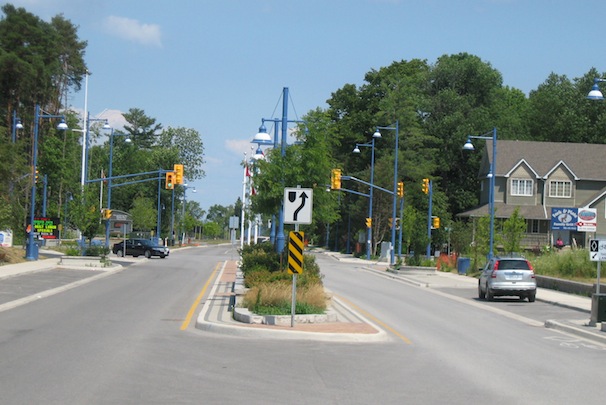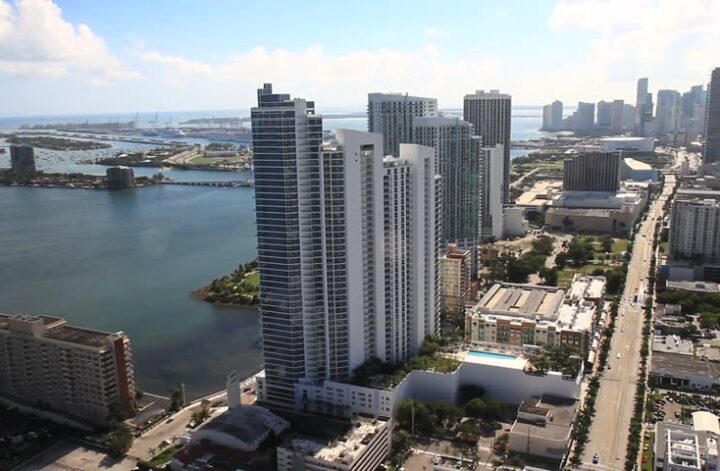One of the first projects I was involved in as a transportation planner was an access management design for Reisterstown Road in Baltimore. It wasn’t a glamorous Complete Streets project with dedicated bus lanes or protected bike lanes. It was mostly the consolidation of driveways and elimination of certain left turns using a raised median. While many older urban and suburban streets are already designed with physical turning restrictions such as planted medians, newer ones often utilize continuous two-way left turn lanes and operate as a free-for-all as drivers make lefts into and out of every driveway and intersection. Worse yet are those 4 lane streets with no middle turn lane where the inner lanes act as de facto left turn lanes. This creates a higher probability of severe T-bone crashes and pedestrian conflicts, not to mention the likelihood of a driver being surprised by a left turning vehicle he or she wasn’t expecting.
Designing for maximum driver convenience and minimal travel time was once the gold standard for roadway design, but this is no longer the case. Access management projects, namely medians and other vehicle turning restrictions, are often said to slow travel times and frustrate drivers. Safety should take priority, however, even if it means adding a couple of minutes to driver commute times. Upon further research, it seems the Federal Highway Administration and some researchers agree.
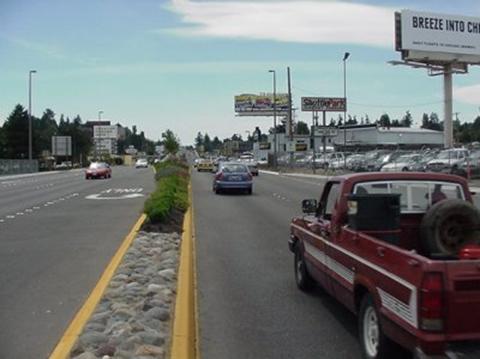
“According to an analysis of crash data in seven states, raised medians reduce crashes by over 40 percent in urban areas and over 60 percent in rural areas.” (Gluck, J., H. S. Levinson, and V. Stover, NCHRP Report 420).
Another study cited by the Utah Department of Transportation showed the following:
The lessening in the severity of crashes is anticipated to be a direct result of the change in the predominant types of collisions. Rear-end and single-vehicle crashes generally increased, while right-angle crashes decreased as a result of the raised median installation. The reduction in right-angle crashes directly resulted in a lessening of the severity of crashes and improved the safety on the roadways where raised medians were installed. This also resulted in a reduction in the fatality rate. In general, the no injury crashes increased and the more severe crashes involving injuries and fatalities decreased as percentages of total crashes. The results show that, in general, a safer roadway is created by the installation of raised medians. (G. Schultz, J. Lewis)
Raised medians don’t just make streets safer. They make streets look better and add to a neighborhood’s character, too. Take this example of Coral Way in Miami. From my purely anecdotal experience, the median slows down traffic, makes vehicle turning movements more predictable, and creates a better walking environment.
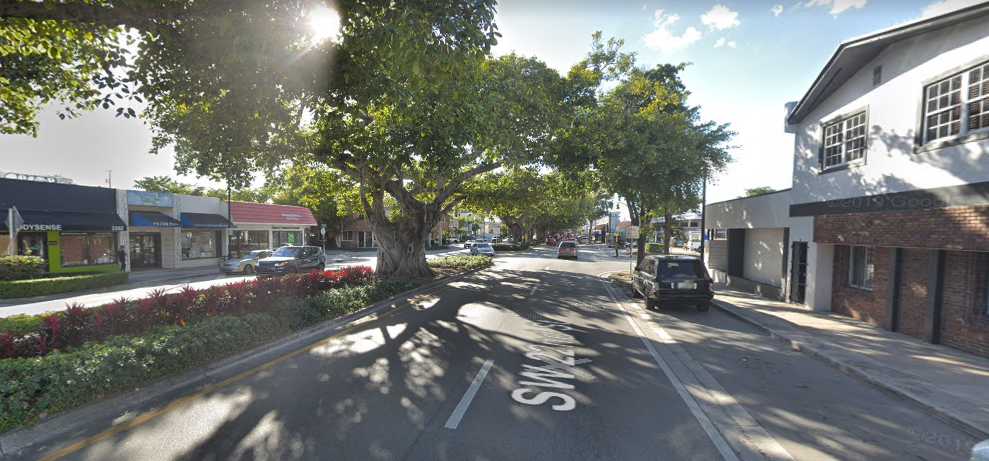
Now compare it to Ludlow Street just a few miles away. Same number of travel lanes, but a completely different kind of street. Ludlow Street not only has numerous residential curb cuts with no access control, but spans more than a mile in some places without a traffic signal or pedestrian crossing. There’s not only a higher risk of high speed T-bone crashes throughout the corridor, but crossing the street as a pedestrian or cyclist is a nightmare. Medians often double as pedestrian refuge islands at crossings. There’s no such luxury on this street.

These are simple examples on linear corridors, but access management applies to more complex urban intersections as well. As usual, I’ll reference NYC DOT, since they’re doing some of the boldest safety redesigns. This project in Queens, while often labeled “Complete Streets”, is also an access management redesign which simplifies vehicle movements to reduce auto/pedestrian conflicts. Similar projects in urban areas have eliminated left turn movements, or relegated them to more predictable left turn lanes.
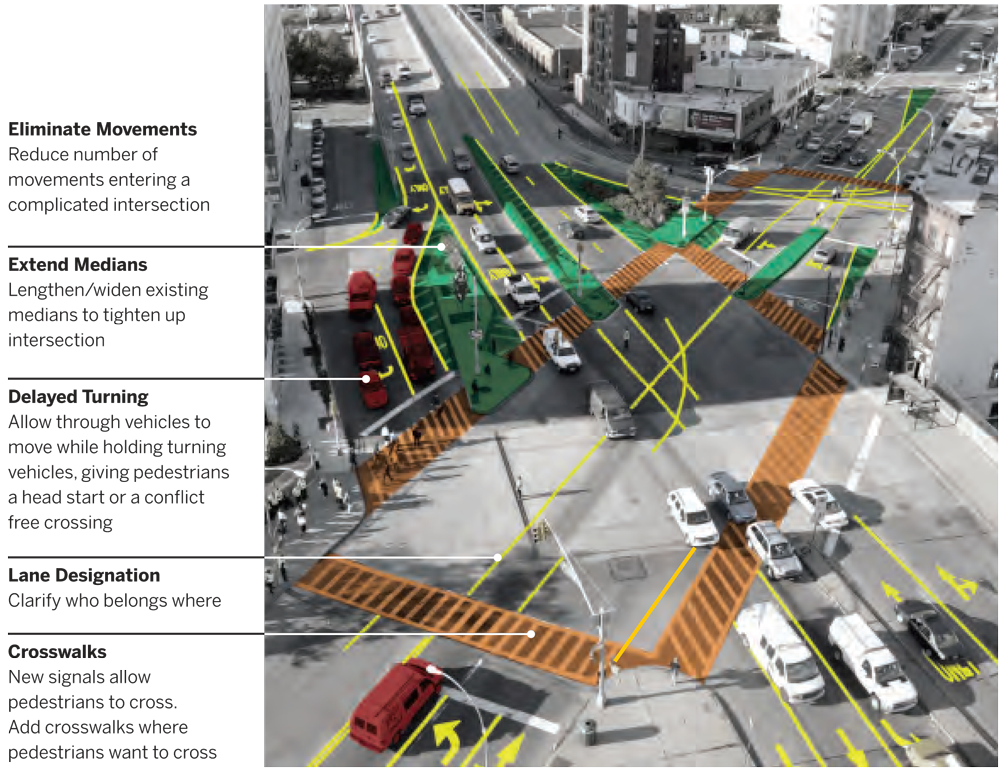
A recent traffic safety study found that pedestrians and bicyclists are killed or severely injured by left turning vehicles at three times the rate compared to right turning vehicles. Leading Pedestrian Intervals (giving pedestrians a head start at signalized intersections while all turning traffic is stopped) is a cheap, fast way to address this issue at some signalized intersections. For other locations, however, it makes sense to eliminate some turning movements completely based on intersection design goals and nearby land uses.
Access management represents a fundamental policy shift in how we treat automobile traffic. By thinking of vehicle turning movements as a sort of luxury good which should be strategically assessed based on multi-modal safety considerations, we create safer streets for all roadway users. In my opinion, that’s worth another minute of driver travel time.

